Microshift’s Advent X 10-speed drivetrain is the Taiwanese brand’s lightest setup with its widest range of gears and is claimed to be durable and uncomplicated.
Microshift doesn’t offer a full Advent X groupset with cranks, chainrings, chains and bottom brackets, but its drivetrain offering is compelling given its all-in £134.97 / $174.97 / AU$269.97 price, HG freehub compatibility and relatively light weight.
Microshift Advent X drivetrain headline figures:
- Total weight (including rear derailleur, 11-48t cassette and shifter): 868g
- Total price (including rear derailleur, 11-48t cassette and shifter): £134.97 / $174.97 / AU$269.97
Microshift’s Advent X performance is impressive, especially considering its price tag, with reliable and consistent shifting from a system that proved to be robust during the test period.
The clutch provided plenty of chain control, too. Shifts weren’t as crisp as more expensive offerings and the cable pull shift lever has lots of travel, but the light action negated this issue somewhat.
Microshift Advent X drivetrain details and specifications
Microshift Advent X 10-speed Trail Trigger Pro shifter
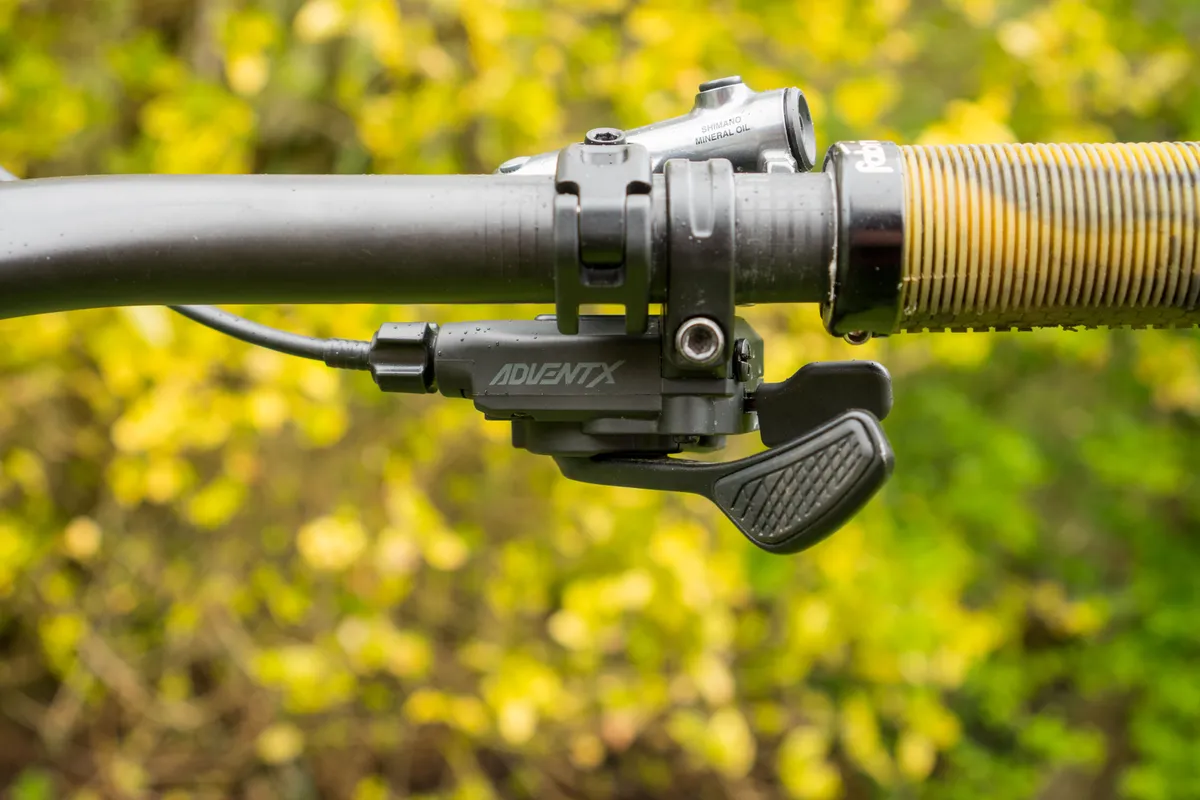
The Advent X shifter functions in the same way as Shimano, where both cable pull and cable release paddles are operated with forward pushes by your right-hand thumb.
The cable pull trigger has a silicone covering to help with grip and the levers pivot on sealed cartridge bearings to help improve shifting smoothness.
It has an unhinged bar clamp and isn’t Matchmaker or I-Spec compatible. It can shift four gears with one push of the cable pull lever but the cable release lever shifts one gear at a time.
On my scales, the Advent X 10-speed Trail Trigger Pro shifter with supplied cable weighed 134g.
Microshift Advent X Clutch rear derailleur
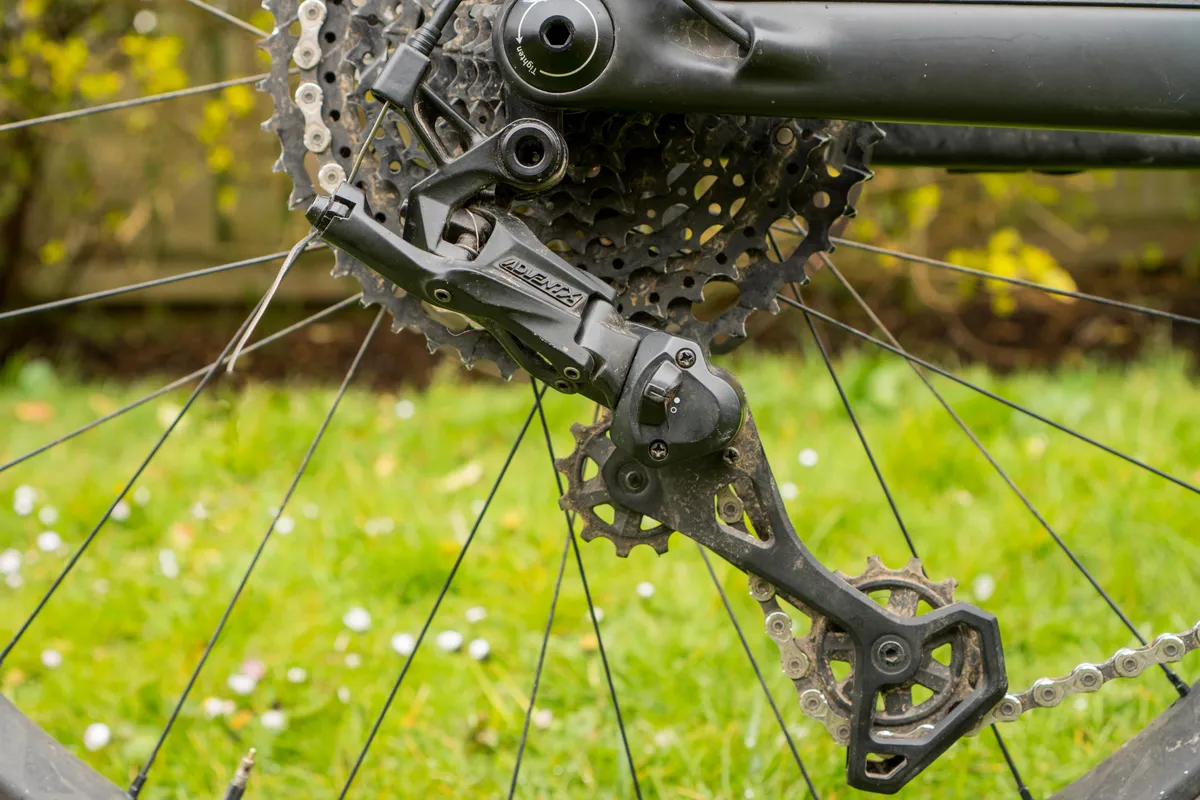
The Advent X rear derailleur uses a ratchet and pawl clutch (similar to TRP’s TR12 derailleur) that’s on/off switchable thanks to a small lever on the derailleur’s knuckle. The clutch’s tension is user-adjustable via a single Torx bolt, located behind the cap on the knuckle.
Microshift says it's used large jockey wheels with tall teeth to help improve chain retention and control.
It’s compatible with most 10-speed chains and most 11-48t cassettes with a maximum largest sprocket compatibility of 48t. Mircoshift recommends using its own Advent X cassette.
The Advent X Clutch rear derailleur weighed 311g on my scales.
Microshift Advent X 11-48t 10-speed cassette with alloy spider
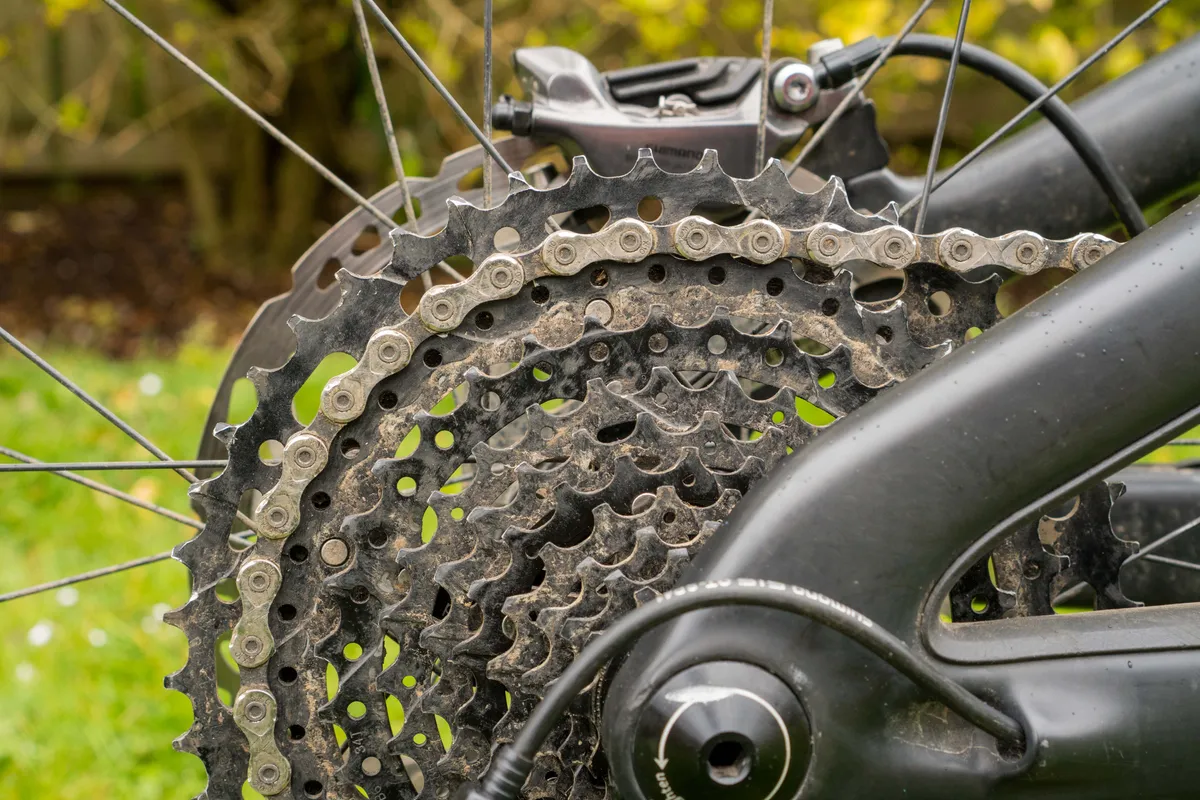
The alloy spider cassette is Microshift’s range-topping Advent X offering, although a cheaper (and heavier) steel spider version is also available.
Microshift is quick to extol the virtues of a 10-speed system; its wider sprocket spacing, wider chain compatibility and fewer gears should equate to improved shift performance in adverse conditions, better longevity and, because it uses Shimano’s HG freehub body system, no hub upgrades or changes should be required to fit it.
Microshift hopes the 11-48t range will be ample and spaced out enough so shifts are less frequent. The largest jump in sprocket sizes is eight teeth, between the two lowest gears, while higher gears are much closer together.
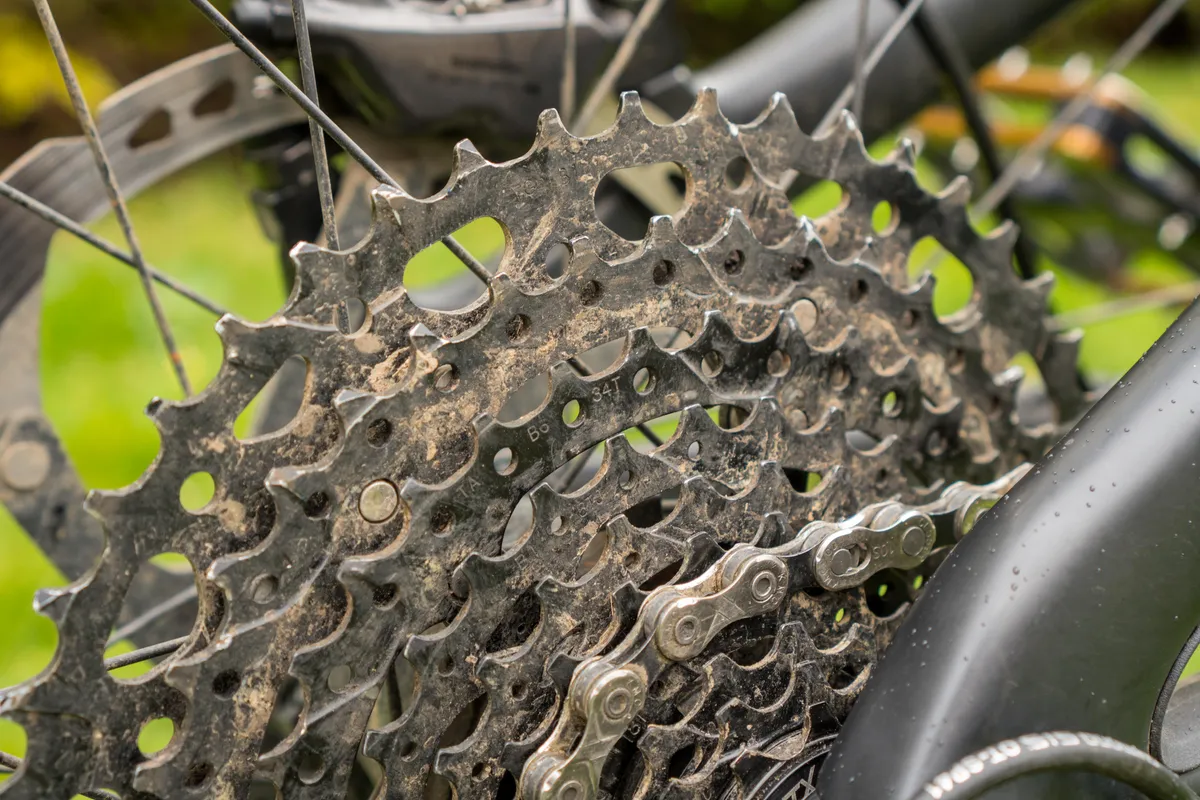
The 10-speed cassette has 11t, 13t, 15t, 18t, 21t, 24t, 28t, 34t, 40t and 48t ratios.
The Microshift Advent X 11-48t 10-speed cassette with alloy spider weighed 423g.
Microshift Advent X drivetrain compatibility details
Chainrings, cranks and chains are all missing from Microshift’s Advent X drivetrain, which means an end consumer will need to rely on third-party products to complete the setup.
Microshift says it's done the opposite to SRAM and Shimano, opening up its products for maximum compatibility to give potential customers the widest choice of parts available, rather than locking them into a specific brand’s ecosystem. However, Microshift recommended I use a Race Face 10-speed chainring and KMC X Series 10-speed chain when testing its setup, for optimal performance.
As previously mentioned, the cassette uses Shimano’s HG freehub standard rather than MicroSpline or an XD Driver which should make changing from existing 9- or 10-speed systems trouble-free.
However, a move from 12-speed gearing down to 10-speed Microshift could require a freehub change, unless you are already using SRAM’s SX or NX Eagle cassettes.
Microshift Advent X drivetrain installation and set up
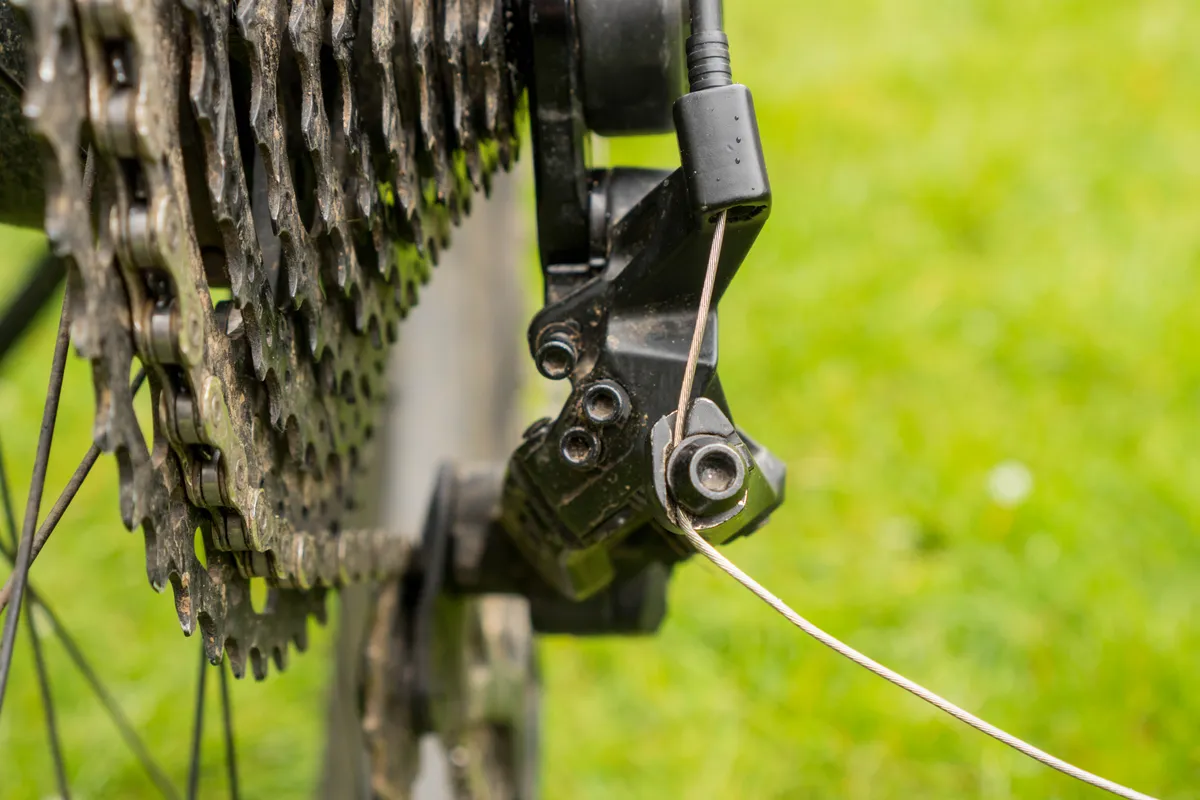
Fitting the Advent X drivetrain was simple and straightforward, and no unusual steps were required during the process.
The derailleur’s cable stop is vertically positioned, so extra outer cable is required for a large-radius loop, similar to Shimano’s systems.
The gap between the derailleur’s cable stop and cable clamp – when in the highest gear – means the cable passes directly over the limit adjustment screws, which can make adjustment tricky.
The clutch’s on/off switch worked reliably and released sufficient tension to make installing and removing the rear wheel easy, however the printed on/off logo isn’t very easy to decipher.

The shifter’s un-hinged bar clamp meant I had to remove my grip and brake lever for its installation, and the location of the bolt plus its width limited the installation location and amount of adjustment on offer. With some setups, some riders might find it hard to get their preferred position.
Setting up the derailleur was remarkably easy though, and Microshift’s video instructions were straightforward to follow. The cable only needed to be pulled through the housing and hand-tightened to correctly set indexing and required no further adjustment.
The limit screws and b-tension adjuster all used the same 3mm Allen bolt size, which helped with faster adjustment. The derailleur’s b-tension adjustment wasn’t especially fussy either, with neither too much nor too little gap between the jockey wheel and cassette to create lazy or poor shifting.
Microshift Advent X drivetrain performance
I tested the Advent X on my Yeti SB165 long-term test bike and Marin Alpine Trail XR over the course of several months and compared it to back-to-back with a host of drivetrains from SRAM, Shimano and smaller brands.
Test conditions ranged from dry and dusty to deep mud, snow and ice on a host of challenging terrain in Scotland’s Tweed Valley, home to the UK’s round of the Enduro World Series. All of the drivetrains were tested on the same trails and in the same conditions.
Microshift Advent X Clutch rear derailleur

The Advent X derailleur performed impressively, with its shifts and general running remaining quiet. Its clutch successfully stopped gears skipping and limited chain slap well for the duration of the test period.
The clutch’s factory tension proved stiff enough to hold a selected gear over rough ground, and the chain didn't jump down the cassette while freewheeling or skipping around under power. However, there was marginally more chain slap over rough terrain compared to Shimano and SRAM drivetrains.
Because the clutch didn’t interfere with shift quality, only a light push of the lever was needed to change gear. General chain stability was impressive, too, which meant adjusting the clutch’s tension wasn’t necessary during the test period.
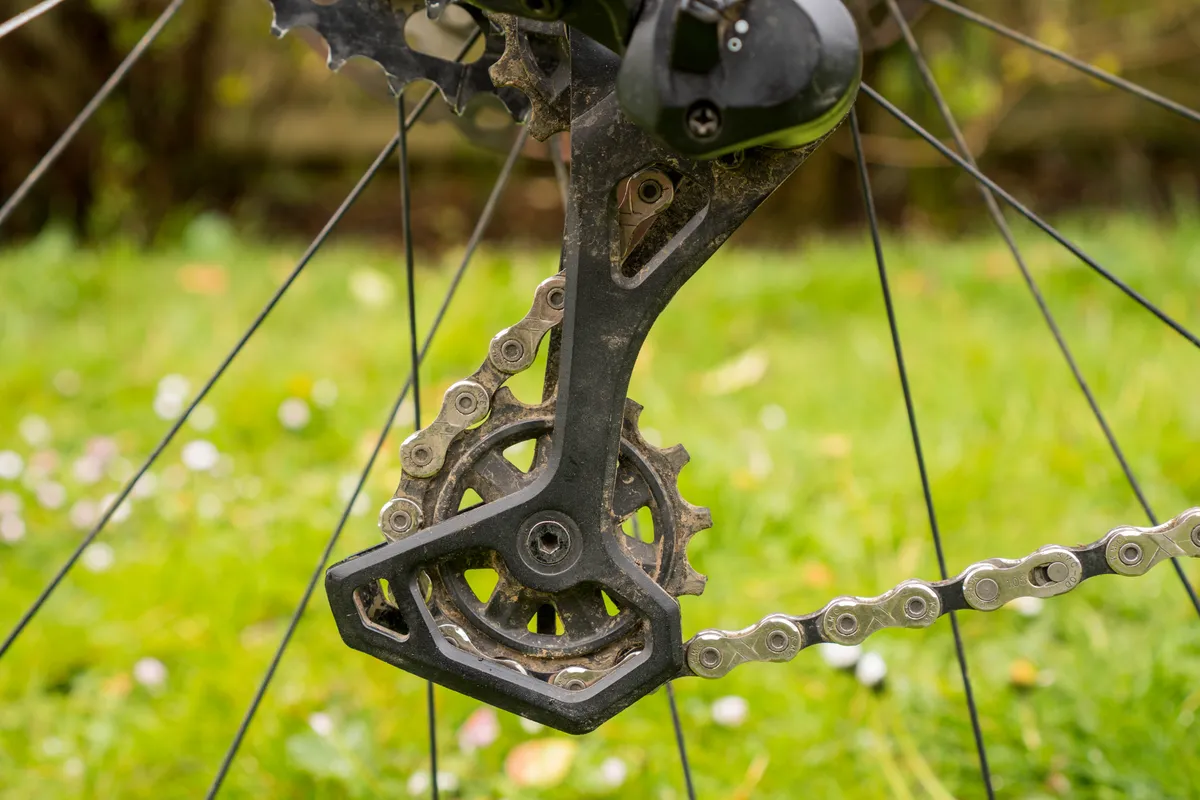
Shifting under power was impressive and the derailleur handled the extra tension and forces well. Some shifts, particularly from high to low gears under high loads, were noisy but there were never any failed shifts. At super-low cadences, shifting was slow because the chain was ‘waiting’ to pass over the cassette’s shift ramps.
The derailleur remained slop- and play-free during the test period and appeared to resist rock strikes well. The jockey wheel teeth remained undamaged and free-running as well.
Microshift Advent X 10-speed Trail Trigger Pro shifter
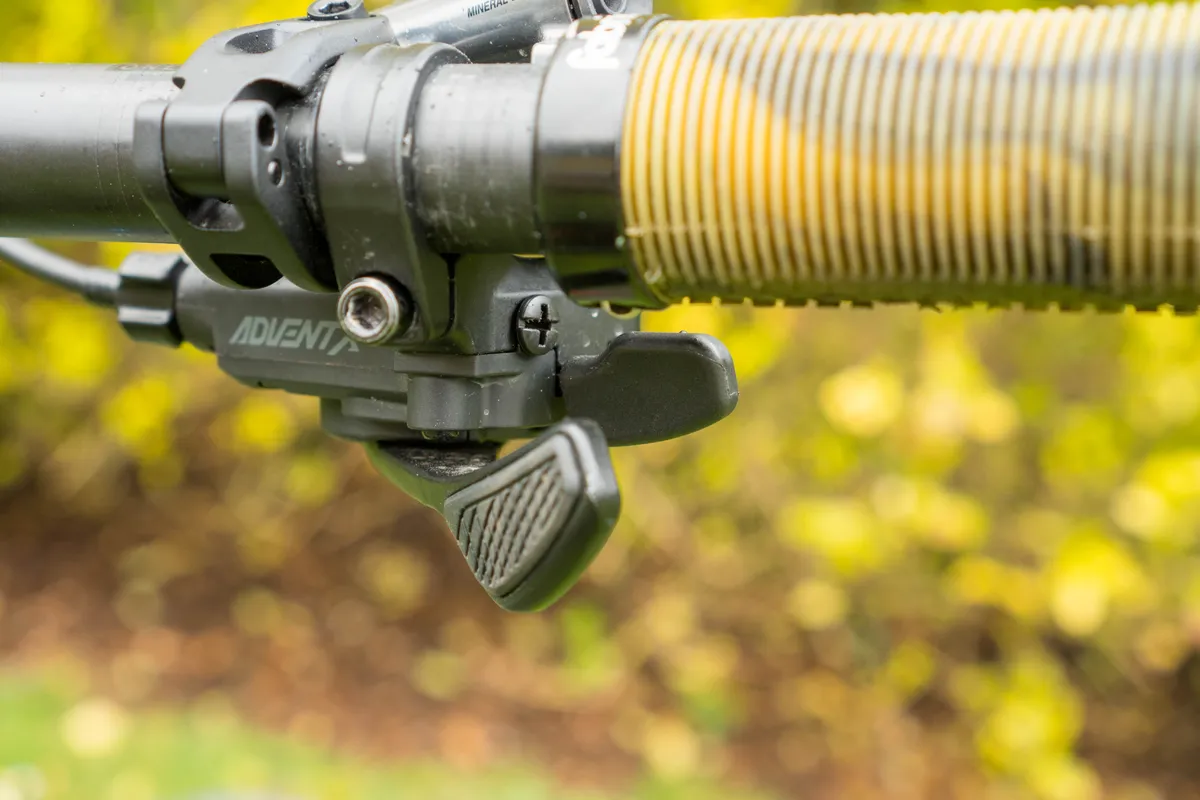
The shifter’s cable pull lever had more travel before gears were engaged than I was used to, and because the derailleur starts to move as soon as the lever is actuated, shifting starts right away.
Unfortunately, because gear engagement happens deep into the shifter’s travel, it was possible to miss-shift if I didn’t sustain the lever’s movement up to and beyond the deep click.
A missed shift means the mech drops back one or two gears before resetting itself in the previously selected gear. This can be quite a noisy and rough-feeling experience.
Learning how far the cable pull shift lever needed to move before a shift was engaged eliminated this problem, but it’s a similar complaint I had with Box Components Box One system.
Luckily for Microshift, shifter feel is very light, and little to no force is required to get it to move. This helps make up for the amount of movement required for gears to shift, but there’s no denying it isn’t as instant as Shimano or SRAM systems.

It’s possible to shift four gears with one push of the cable pull lever, but to do so I had to rotate my wrist on the bar, which made using this feature physically prohibitive to do on anything other than a smooth fire road.
General shift quality is good, though, and each gear shift is accompanied by a fairly defined click once it has engaged. However, it would be a stretch to call the shifter’s action crisp.
Ergonomics were pretty good and the short shifter paddles favoured an outboard-of-the-brake-lever-clamp mounting position to reduce thumb stretch. If the space between your brake lever and handlebar grips is limited, this could be a concern.
Shift quality remained as-new during the test period, despite a rather care-free maintenance routine.
Microshift Advent X 11-48t 10-speed cassette with alloy spider
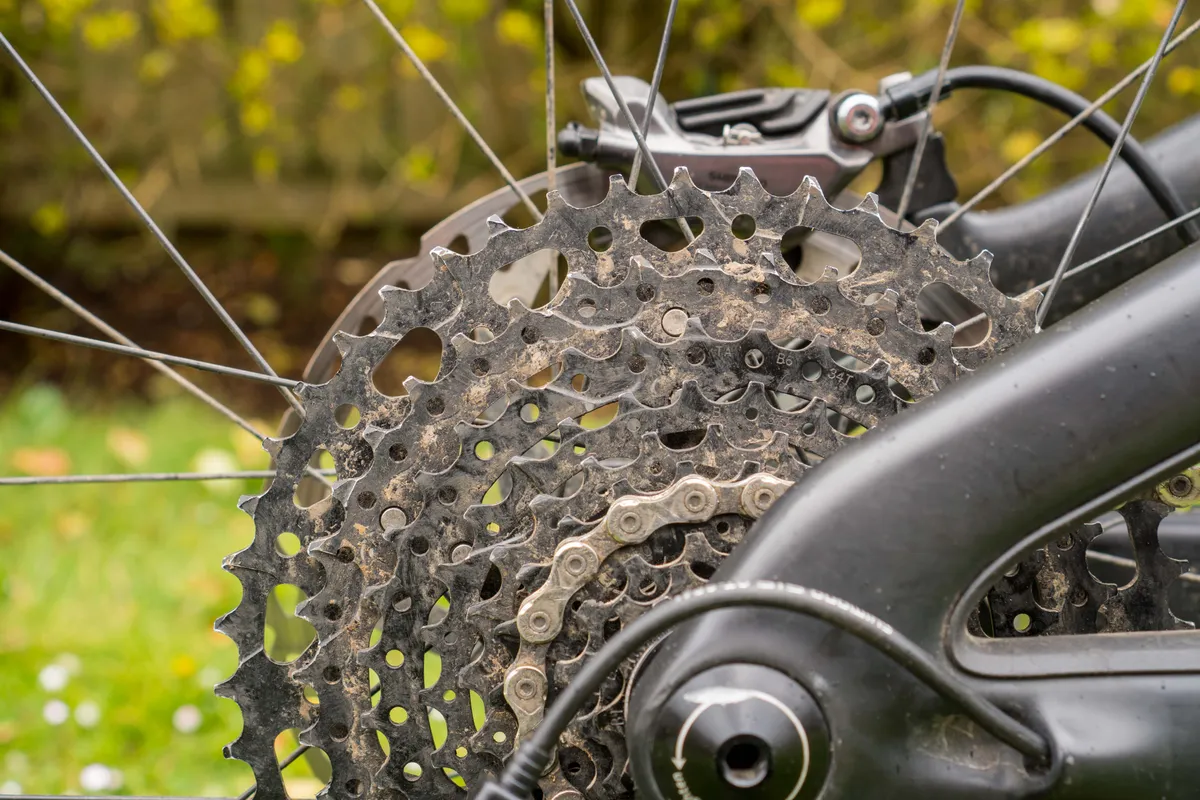
The Microshift cassette and KMC X10 chain worked well together, with near-silent operation while pedalling. There appeared to be no skipping and limited hesitancy (see above about low-cadence shifts) when shifting, even when the system was covered in mud and dirt or running without much lubrication.
The anodising on the cassette’s two lowest gears’ started to wear off on the rear-facing part of its teeth, but this is merely cosmetic and didn't affect performance. It has also resisted corrosion well and cleans up easily and quickly to almost-new condition.
The gear ratios felt usable because the steps between each sprocket are fairly gradual. The largest jump is eight teeth between the two lowest gears, which is less than SRAM’s comparable 10 teeth jump on its 10-52 Eagle cassettes.
Because the ratios are fairly close, each gear change is accompanied by a predictable and regular change in cadence to match the optimum speed for the gear and I didn't feel like it needed extra sprockets between each gear.

However, I found the system worked best with a 30t chainring to lower the 48t cassette sprocket’s ratio and help on very steep climbs, but this is just personal preference and some people might prefer the extra high gear ratio with a larger chainring.
How does Microshift Advent X compare to SRAM NX Eagle and Shimano Deore M6100?
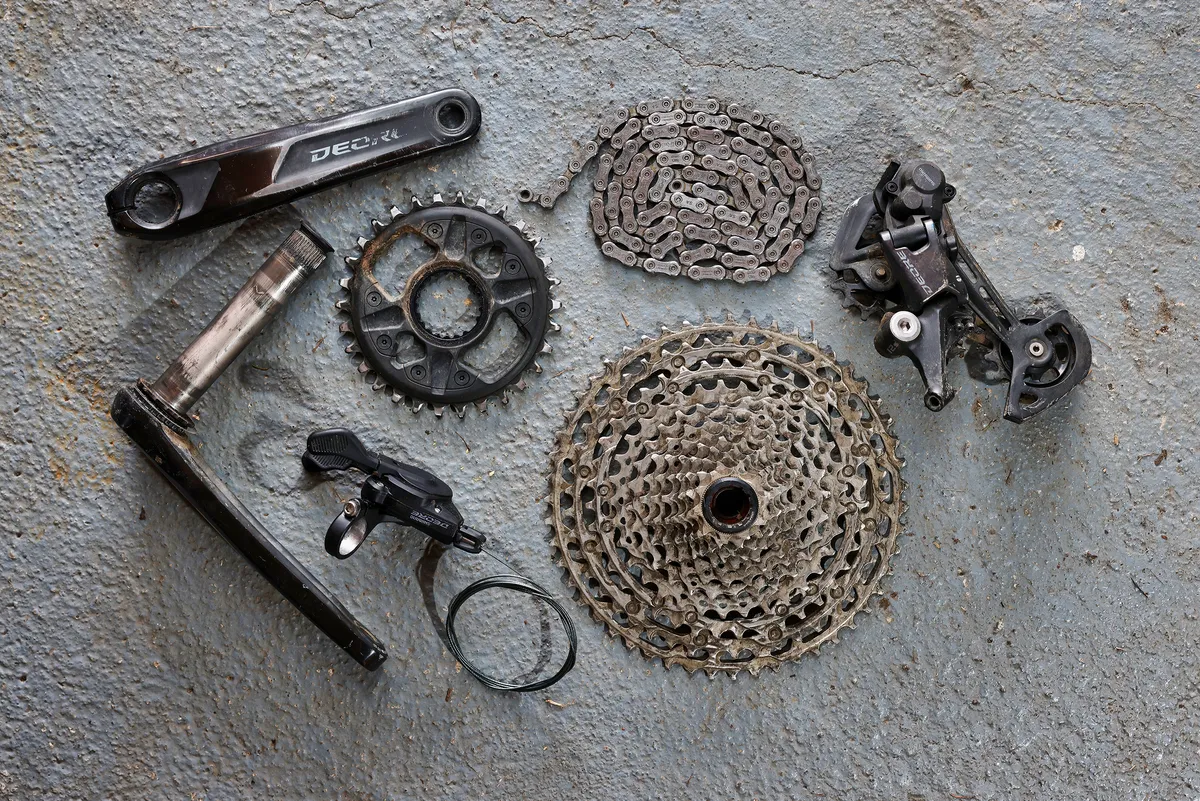
Microshift’s £134.97 / $174.97 / AU$269.97 full-system price lowballs both SRAM and Shimano, with an equivalent NX Eagle setup costing £239 and Deore M6100 £182.97.
It trumps them both on weight, too, coming in at 220g less than NX Eagle and 182g lighter than Deore. Interestingly, it’s also lighter than an equivalent Shimano XT M8100 setup by 25g.
Arguably shift feel is similar, if not a little less refined compared to SRAM’s NX Eagle, which seems to feel marginally more positive.
However, Advent X’s general derailleur quality feels significantly better than NX Eagle – with tighter tolerances out of the box – and I’d bet that it’ll last significantly longer when subjected to the rough and tumble of MTBing.
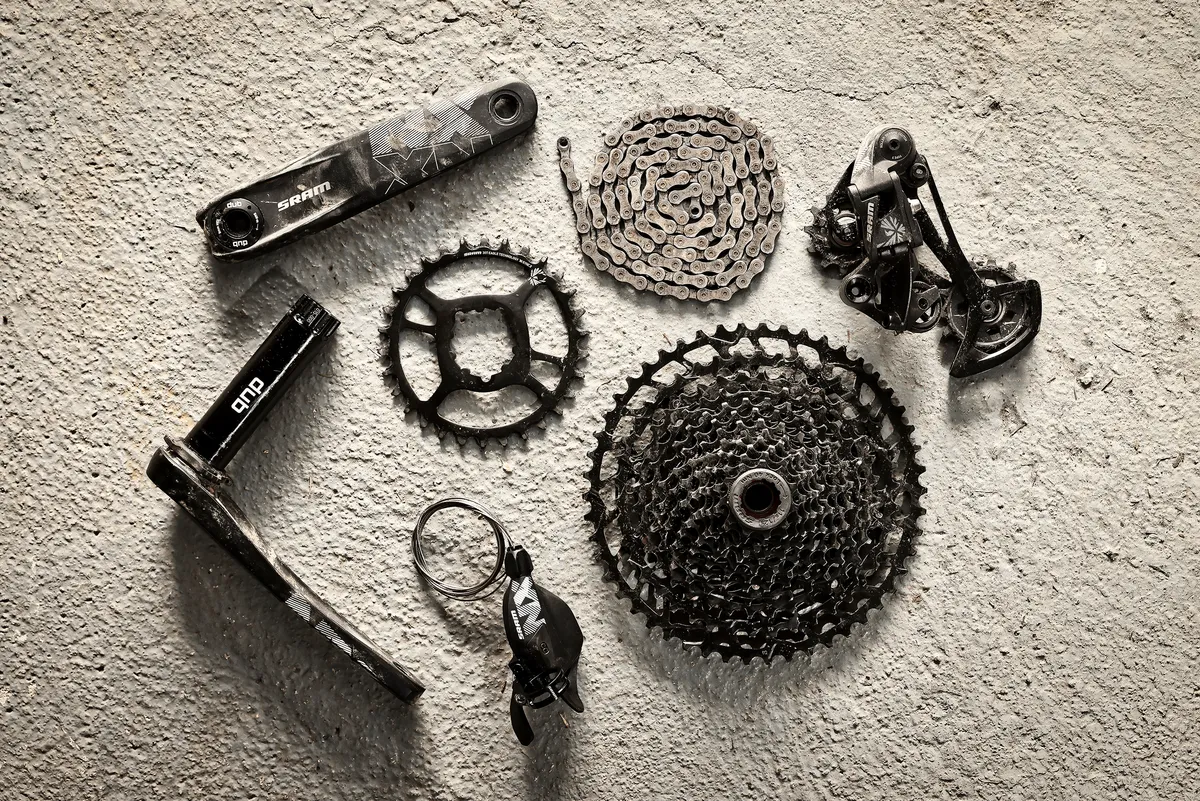
Both systems use the HG freehub body, so there’s little in it there, but the NX Eagle cassette does have more gears and a wider range to boot. However, because Microshift’s Advent X is significantly cheaper I would be hard-pressed to not recommend it over SRAM’s NX.
It’s just as clear-cut between Deore M6100 and Advent X, but this time in Deore’s favour. The Shimano cassette’s gear ratios – albeit necessitating a Micro Spline freehub body to use at extra cost – are impressively well-considered and the extra two gears are real-life usable, despite the extra weight over Microshift.
Shift feel is also significantly better on Deore because shifts are more instant, but derailleur quality feels pretty similar. It’s the price where Advent X pushes ahead, but I’d try and stretch myself to afford Deore just for the cassette alone.
Microshift Advent X drivetrain bottom line
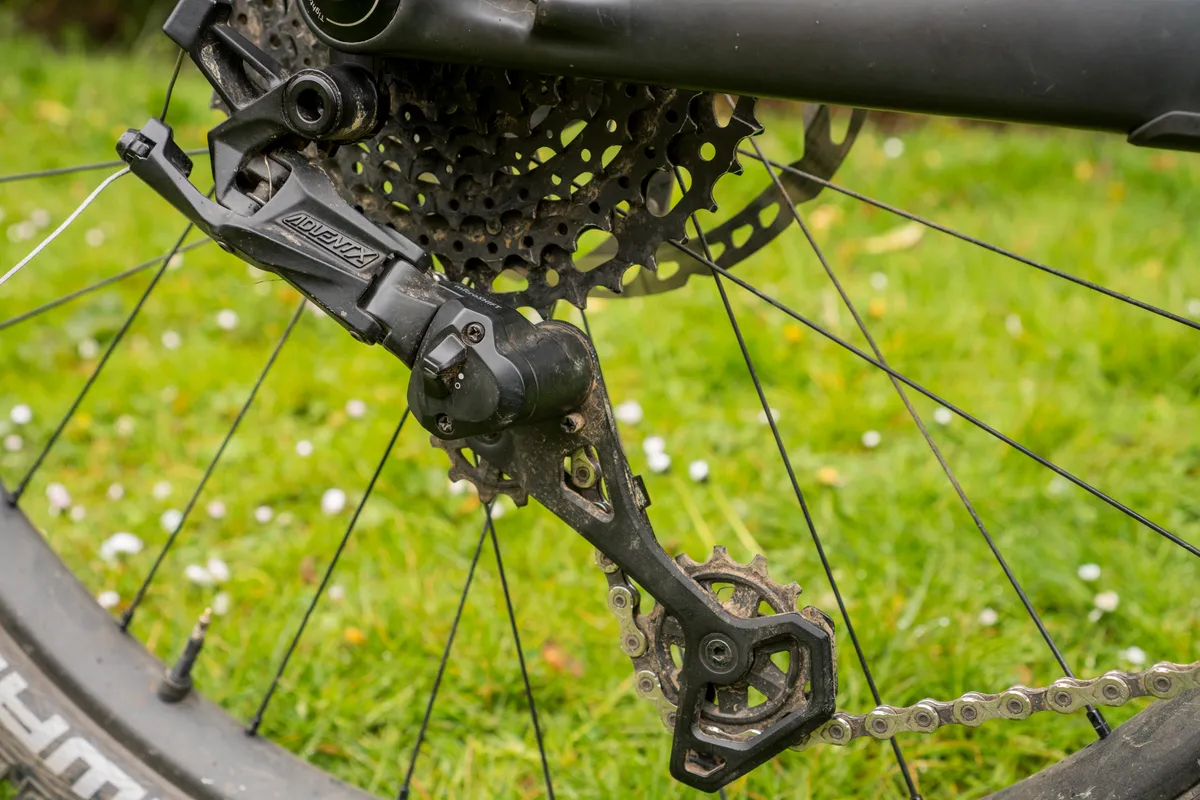
Advent X performed impressively during the test period; its build quality, relative light weight and chain control are clearly akin to or surpass some more expensive offerings from different brands.
General robustness was also impressive and, should disaster strike and a component fail or become damaged, you won’t need a second mortgage to replace parts. Despite a less-than-perfect shift feel, Advent X’s compelling price point more than makes up for it.
Product
| Brand | microshift |
| Price | 269.97 AUD,134.97 GBP,174.97 USD |
| Weight | 868.0000, GRAM () - Total weight including rear derailleur, 11-48t cassette and shifter |
| br_whatWeTested | Microshift Advent X drivetrain |
Features
| br_speed | 10 |
| Features | Compatible with ADVENT X 10-speed drivetrains only. Compatible with standard 10-speed chains. Ratchet-and-pawl clutch provides chain security and can be turned on and off with a switch. Metric adjustment hardware. Larger pulleys with taller teeth improve chain security and provide higher overall ride height. Aluminum cage. |
| br_cassetteOptions | 11-48t |
